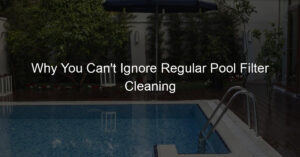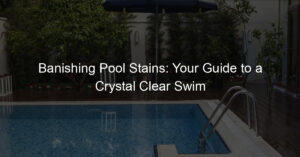Introduction to Pool Plaster
Welcome to our comprehensive guide on pool plaster. This essential material plays a crucial role in the longevity and aesthetics of your swimming pool. In this section, we’ll delve into the importance of pool plaster and provide an overview of the different types available.
- Understanding the Importance of Pool Plaster
- Overview of Pool Plaster Types
- White Plaster: This is the most traditional and economical option. It provides a classic, clean, and bright look to your pool.
- Quartz Plaster: Quartz plaster is more durable than white plaster and comes in a variety of colors. It’s a great choice if you want to add a touch of luxury to your pool.
- Pebble Plaster: Pebble plaster is the most durable option and offers a natural, rustic look. However, it’s also the most expensive.
Pool plaster serves as the waterproofing layer between the pool water and the concrete pool structure. It’s not just about making your pool look good; it’s about protecting your investment. Without a proper layer of plaster, the pool water can seep into the concrete, causing damage over time. Furthermore, a well-plastered pool provides a smooth surface for swimmers, enhancing the overall swimming experience.
There are several types of pool plaster you can choose from, each with its unique benefits and drawbacks. The three most common types are white plaster, quartz plaster, and pebble plaster.
Choosing the right pool plaster depends on your budget, aesthetic preferences, and how much wear and tear your pool will endure. In the following sections, we’ll delve deeper into each type and provide tips on how to choose the best one for your needs.
Pool Plaster Selection: Factors to Consider
When it comes to selecting the perfect plaster for your pool, there are several factors that you need to consider. From assessing your pool’s needs to understanding the longevity of different pool plasters, every aspect plays a significant role in your decision-making process. Let’s delve into these factors in more detail.
- Assessing Your Pool’s Needs
- Considering Your Budget
- Understanding the Longevity of Different Pool Plasters
The first step in choosing the right pool plaster is to understand your pool’s specific needs. This includes considering the size, shape, and usage of your pool. For instance, a pool that is frequently used may require a more durable plaster, while a smaller pool may benefit from a plaster that enhances its aesthetic appeal. It’s also essential to consider the climate in your area, as certain types of plaster may be more suited to warmer or cooler environments.
Another crucial factor to consider is your budget. Pool plaster can range in price, depending on the type and quality. While it may be tempting to opt for the cheapest option, it’s important to remember that the quality of the plaster can significantly impact the longevity and appearance of your pool. Therefore, it’s worth investing in a higher-quality plaster if your budget allows.
Finally, understanding the longevity of different pool plasters can help you make an informed decision. Some plasters are known for their durability and can last for many years with proper maintenance, while others may need to be replaced more frequently. By understanding the lifespan of different plasters, you can choose one that suits your needs and expectations.
In conclusion, selecting the right pool plaster involves a careful consideration of your pool’s needs, your budget, and the longevity of different pool plasters. By taking these factors into account, you can ensure that you choose a plaster that not only enhances the beauty of your pool but also stands the test of time.
Choosing Pool Plaster: A Step-by-Step Guide
Choosing the right pool plaster can seem like a daunting task, especially with the numerous options available in the market. However, by following a step-by-step process, you can make an informed decision that suits your pool’s needs and your personal preferences. Here’s a simple guide to help you navigate through the process.
- Identifying your pool’s requirements
- Researching different pool plaster options
- Consulting with a pool plaster professional
- Making the final decision
Before you start exploring different plaster options, it’s crucial to understand your pool’s specific needs. Factors such as the pool’s size, shape, location, and usage can significantly impact the type of plaster you should choose. For instance, a pool that’s frequently used may require a more durable plaster type. Similarly, a pool located in a sunny area might need a plaster that can resist UV damage.
Once you’ve identified your pool’s requirements, the next step is to research the different plaster options available. Pool plasters come in various materials, colors, and finishes. Some popular types include white plaster, quartz plaster, and pebble plaster. Each type has its pros and cons, so it’s essential to weigh these against your pool’s needs and your budget.
After doing your research, it’s advisable to consult with a pool plaster professional. They can provide expert advice based on their experience and knowledge in the field. They can also help you understand the long-term maintenance requirements of each plaster type, which is a crucial factor to consider when making your decision.
Once you’ve gathered all the necessary information, it’s time to make the final decision. Remember, the best plaster for your pool is one that meets your specific needs, fits within your budget, and is aesthetically pleasing. Don’t rush this decision; take your time to ensure you’re making the right choice.
In conclusion, choosing the right pool plaster doesn’t have to be a complicated process. By identifying your pool’s needs, researching different options, consulting with a professional, and carefully making your final decision, you can find a plaster that perfectly suits your pool.
Best Pool Plaster: Top Picks
Choosing the best pool plaster can be a daunting task, especially with the variety of options available in the market. However, we’ve done the hard work for you and compiled a list of top-rated pool plasters. We’ve also compared them based on their features, durability, and cost-effectiveness. Let’s dive in!
-
Review of Top-Rated Pool Plasters
Here are our top picks for the best pool plasters:
- White Marble Plaster: Known for its classic and timeless appeal, white marble plaster is durable and offers a smooth finish. It’s a great choice for those who prefer a traditional look for their pool.
- Quartz Plaster: This type of plaster is a mix of white cement and quartz aggregate. It’s known for its strength and resistance to chemical damage. Plus, it comes in a variety of colors.
- Pebble Plaster: If you’re looking for a more natural look, pebble plaster is the way to go. It’s made of tiny pebbles and offers a unique, textured finish.
Remember, the best pool plaster for you depends on your personal preferences and the specific needs of your pool.
-
Comparison of Best Pool Plasters
Let’s compare our top picks based on their durability, cost, and maintenance requirements:
Type of Plaster Durability Cost Maintenance White Marble Plaster High Medium Low Quartz Plaster Very High High Medium Pebble Plaster Medium High High As you can see, each type of plaster has its own strengths and weaknesses. The key is to choose one that best fits your budget, maintenance capability, and aesthetic preferences.
Pool Plaster Types: An In-Depth Look
When it comes to pool plaster, there are several types to choose from. Each type has its unique characteristics, benefits, and drawbacks. In this section, we will delve into one of the most common types of pool plaster: white plaster.
White Plaster
White plaster has been a popular choice for pool owners for many years. It’s a classic option that gives your pool a clean, bright, and inviting look.
- Overview of White Plaster
- Pros and Cons of White Plaster
White plaster is the most traditional pool finish and has been around for decades. It’s made from a mixture of white cement, white marble aggregate, and water. This type of plaster is known for its smooth and durable finish, which can last for many years with proper care and maintenance.
Like any other pool plaster, white plaster has its advantages and disadvantages. Let’s take a closer look at them.
| Pros | Cons |
|---|---|
| Cost-effective | Can show stains and discoloration over time |
| Durable and long-lasting | Requires regular maintenance |
| Classic, clean look | Can be rough on feet if not properly maintained |
In conclusion, white plaster is a great option if you’re looking for a cost-effective and traditional pool finish. However, it does require regular maintenance to keep it looking its best and to prevent discoloration and roughness.
Quartz Plaster
Quartz plaster is a popular choice for pool owners. It’s a type of pool plaster that combines a mixture of white cement, white sand, and quartz aggregate. This creates a durable and visually appealing pool surface.
- Overview of Quartz Plaster
Quartz plaster is known for its strength and longevity. It’s a great choice for pool owners who want a long-lasting and beautiful pool surface. The quartz in the plaster provides a sparkling effect that enhances the aesthetic appeal of the pool. Plus, it’s available in a variety of colors, allowing you to customize the look of your pool.
- Pros and Cons of Quartz Plaster
| Pros | Cons |
|---|---|
| Quartz plaster is very durable and can last for up to 15-20 years with proper maintenance. | It’s more expensive than traditional white plaster. |
| It provides a beautiful, sparkling pool surface. | It can be rough on the feet due to the quartz aggregate. |
| It’s available in a variety of colors. | It requires professional installation. |
In conclusion, quartz plaster is a great choice for those who want a durable and beautiful pool surface. However, it’s important to consider the cost and potential discomfort before making a decision. Always consult with a pool professional to determine the best plaster for your pool.
Pebble Plaster
Let’s take a closer look at another type of pool plaster, known as pebble plaster. This unique plaster type has its own set of benefits and drawbacks that are important to understand before making a decision.
- Overview of Pebble Plaster
- Pros and Cons of Pebble Plaster
Pebble plaster is a type of pool plaster that is made by mixing small pebbles with cement. The pebbles are then hand-troweled onto the pool surface, creating a rough texture. This plaster type is known for its durability and natural, rustic appearance. It’s like having a piece of the riverbed right in your backyard!
Just like any other material, pebble plaster has its pros and cons. Let’s explore them:
| Pros | Cons |
|---|---|
| Highly durable and long-lasting | More expensive than other plaster types |
| Offers a natural, rustic look | Rough texture can be uncomfortable for swimmers |
| Resistant to pool chemicals | Requires professional installation |
In conclusion, pebble plaster can be a great choice if you’re looking for a durable and natural-looking pool surface. However, it’s important to consider the higher cost and potential discomfort for swimmers.
Pool Plaster Comparison: Which is Right for You?
Choosing the right pool plaster can be a challenging task, especially with the wide variety of options available. To make the best decision, it’s important to compare the durability, cost, and aesthetics of different plasters. Let’s dive in and explore these factors.
- Comparing Durability of Different Plasters
When it comes to pool plasters, durability is a key factor to consider. Some plasters, like white marble-based plaster, are known for their long-lasting quality. They can last up to 20 years with proper maintenance. On the other hand, quartz plaster, while more expensive, is even more durable and can last up to 25 years. It’s important to consider how long you plan to keep your pool and how much maintenance you’re willing to do when choosing a plaster based on durability.
- Comparing Cost of Different Plasters
Cost is another significant factor to consider when choosing pool plaster. Standard white plaster is the most affordable option, typically costing between $4 to $5 per square foot. Quartz plaster, while more durable, is also more expensive, costing around $5 to $6 per square foot. Pebble plaster, known for its unique aesthetic appeal, is the most expensive, costing between $8 to $10 per square foot. It’s important to balance cost with other factors like durability and aesthetics when making your decision.
- Comparing Aesthetics of Different Plasters
Aesthetics play a crucial role in choosing the right pool plaster. White plaster gives a classic, clean look to your pool and enhances the blue color of the water. Quartz plaster, while more expensive, comes in a variety of colors and gives your pool a more luxurious look. Pebble plaster, the most expensive option, offers a unique, natural look with its small pebbles and stones. The right choice depends on your personal taste and the overall look you want for your pool.
In conclusion, the right pool plaster for you depends on your budget, how long you plan to keep your pool, and your aesthetic preferences. By comparing the durability, cost, and aesthetics of different plasters, you can make an informed decision that best suits your needs.
Pool Plaster Material: What You Need to Know
When it comes to maintaining a swimming pool, understanding the materials used is crucial. One of the most important materials to understand is pool plaster. This section will delve into the composition of pool plaster and how it affects the performance of your pool.
- Understanding the composition of pool plaster
Pool plaster is the final coating applied to the shell of a concrete pool. It is a mix of white cement, water, and marble aggregate. The white cement and water create a paste that binds the mixture together, while the marble aggregate gives the plaster its durability and smooth texture. This composition makes pool plaster resistant to the constant exposure to water and chemicals, which is essential for a pool’s longevity.
- How pool plaster material affects its performance
The quality of pool plaster material directly affects the performance of your pool. High-quality plaster provides a smooth and non-porous surface that is resistant to algae growth and staining. It also affects the pool’s appearance, as the smoothness and color of the plaster can enhance the pool’s aesthetic appeal.
On the other hand, poor-quality plaster can lead to numerous problems. It can become rough, leading to uncomfortable surfaces that can harm swimmers. It can also become porous, leading to water seepage and potential damage to the pool structure. Therefore, understanding and choosing the right pool plaster material is crucial for the overall performance and lifespan of your pool.
In conclusion, the material of your pool plaster plays a pivotal role in the performance and longevity of your swimming pool. Therefore, it’s essential to understand its composition and how it affects your pool’s performance. This knowledge will help you make informed decisions when it comes to maintaining or renovating your pool.
Pool Plaster Options: Exploring the Possibilities
When it comes to pool plaster, the options are as diverse as your imagination. From color to texture, there are numerous ways to customize your pool to fit your style and needs. Let’s explore some of the possibilities.
-
Color Options for Pool Plaster
Color plays a significant role in setting the mood and enhancing the aesthetic appeal of your pool. Traditionally, pool plasters were only available in white. However, today’s market offers a rainbow of colors to choose from. Here are some popular options:
- White: This is the classic choice, known for its clean and bright look. It also helps to reflect light, making the pool water appear more vibrant.
- Blue: Blue plaster gives your pool a tropical, ocean-like feel. The shades can range from light sky blue to deep navy.
- Grey: Grey plaster can give your pool a sophisticated, modern look. It also tends to hide dirt and stains better than lighter colors.
- Beige: If you’re aiming for a natural, lagoon-style pool, beige plaster can be a great choice. It gives the pool a warm, inviting look.
Remember, the color of your plaster can significantly impact the overall look of your pool. So, choose wisely!
-
Texture Options for Pool Plaster
Texture is another crucial factor to consider when choosing pool plaster. It not only affects the look of your pool but also its feel underfoot. Here are some common texture options:
- Smooth: This is the traditional choice for pool plaster. It’s comfortable underfoot and easy to clean.
- Aggregate: Aggregate plaster includes small pebbles or stones in the mix, giving the pool a rougher texture. This can add a natural, rustic look to your pool.
- Quartz: Quartz plaster is a mix of white cement and quartz aggregate. It’s known for its durability and non-slip properties.
When choosing a texture, consider both the aesthetic appeal and practicality. For instance, a rough texture may look great but can be uncomfortable for swimmers.
In conclusion, the options for pool plaster are vast and varied. By considering both color and texture, you can create a pool that is not only functional but also a visual delight.
Selecting Pool Plaster: Expert Tips
When it comes to choosing the right pool plaster, expert advice can be invaluable. Here are some tips from professionals in the field, as well as common mistakes to avoid.
- Advice from pool plaster professionals
- Consider the type of pool you have. Different pools may require different types of plaster.
- Think about the look you want to achieve. The color and texture of the plaster can greatly affect the appearance of your pool.
- Don’t forget about maintenance. Some types of plaster may require more upkeep than others.
- Common mistakes to avoid when selecting pool plaster
- Choosing the cheapest option. While it’s important to stick to your budget, the cheapest plaster may not be the best quality.
- Ignoring professional advice. Professionals have a lot of experience and can guide you in making the best choice.
- Not considering the long-term. Think about how the plaster will look and perform in the long run, not just immediately after installation.
Professionals in the pool plaster industry have a wealth of knowledge to share. Here are some of their top tips:
When selecting pool plaster, it’s easy to make mistakes. Here are some common ones to avoid:
In conclusion, selecting the right pool plaster involves careful consideration and informed decision-making. By following expert advice and avoiding common mistakes, you can ensure that you choose the best plaster for your pool.
Pool Plaster Guide: Maintaining Your Pool Plaster
Pool plaster is a crucial component of your swimming pool. It not only gives your pool a smooth and appealing look but also acts as a waterproof barrier, protecting the underlying concrete and steel structure. However, like any other part of your pool, the plaster needs proper care and maintenance to keep it in top condition and extend its lifespan. This guide will provide you with essential tips on how to maintain different types of pool plaster and how to prolong its life.
- Proper care for different types of pool plaster
There are various types of pool plaster, including white plaster, colored plaster, pebble, and quartz. Each type requires a specific care routine.
White Plaster: This is the most common type of pool plaster. It is susceptible to staining and discoloration, so it’s essential to maintain balanced pool water chemistry. Regular brushing and cleaning can also prevent algae growth and staining.
Colored Plaster: Colored plaster requires more maintenance than white plaster. It’s crucial to avoid high levels of chlorine, which can bleach the color. Also, maintain a balanced pH level to prevent discoloration.
Pebble and Quartz: These types of plaster are more durable but still require care. Regular brushing can prevent the growth of algae and calcium deposits. Also, maintain balanced water chemistry to avoid staining and discoloration.
- How to extend the lifespan of your pool plaster
Extending the life of your pool plaster is not a difficult task. Here are some tips:
Regular Cleaning: Regular brushing and vacuuming can prevent algae growth, staining, and discoloration, which can damage the plaster over time.
Proper Water Chemistry: Maintaining balanced pool water chemistry is crucial. High levels of chlorine, unbalanced pH, and high calcium hardness can damage the plaster.
Professional Inspection: Have your pool plaster inspected by a professional annually. They can identify any potential issues and recommend necessary repairs or maintenance.
By following these tips, you can keep your pool plaster in top condition and extend its lifespan, saving you time and money in the long run.
Conclusion: Choosing the Right Pool Plaster
As we wrap up our comprehensive guide on pool plaster, it’s important to revisit the key points and share some final thoughts on selecting the perfect pool plaster for your swimming pool.
- Recap of key points:
- Final thoughts on selecting the perfect pool plaster:
Throughout this guide, we’ve explored the importance of pool plaster, the factors to consider when selecting it, and the different types available. We’ve also provided a step-by-step guide on how to choose the right plaster, and offered expert tips to help you make an informed decision.
Remember, the best pool plaster for your pool depends on a variety of factors, including your budget, the type of pool you have, and your personal preferences. It’s also essential to consider the durability and maintenance requirements of the plaster, as these will impact the long-term cost and upkeep of your pool.
Choosing the right pool plaster is a crucial decision that can significantly impact the longevity and aesthetics of your swimming pool. Therefore, it’s essential to take your time, do your research, and consult with professionals if needed.
In conclusion, the perfect pool plaster is one that not only enhances the beauty of your pool but also stands the test of time. So, make your choice wisely and enjoy the many benefits of a well-plastered pool.
Remember, “A swimming pool is not just a hole in the ground filled with water; it’s a lifestyle, a place where memories are created. Therefore, make it the best it can be.”














